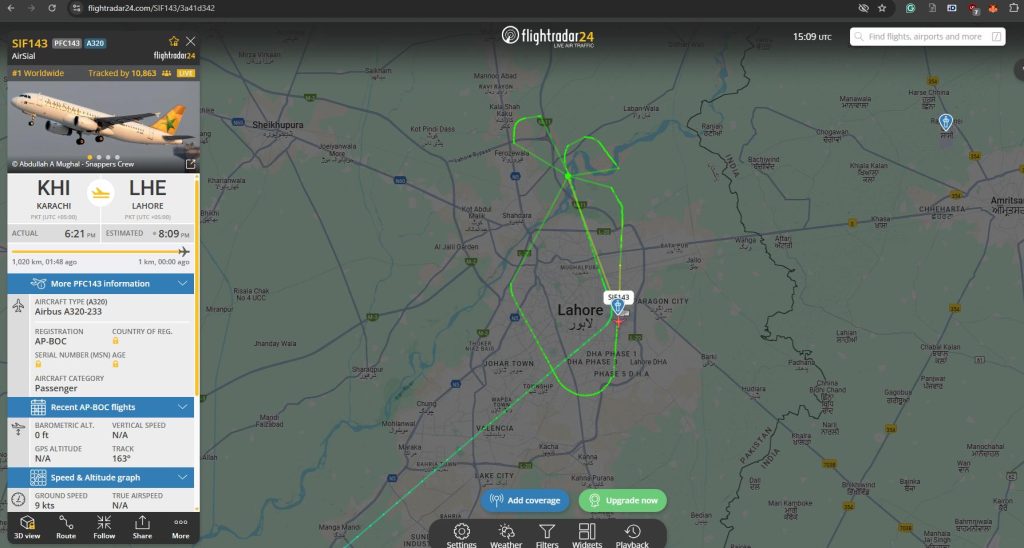
Aviation experts are voicing significant concerns regarding the safety of Pakistan’s airspace for commercial flights, pointing to publicly available flight tracking data, including from platforms like FlightRadar24, which reportedly showed civilian aircraft operating during recent periods of alleged drone activity. These observations have ignited a debate within the international aviation community about the potential risks to passenger planes flying over the region.
Concerns peaked around May 7-9, 2025, a period during which reports emerged of drone incursions in areas near the border. Analysis of flight tracking data from sources such as FlightRadar24 by aviation enthusiasts and experts reportedly depicted a number of civilian flights proceeding through Pakistani airspace, even as military activity was alleged to be taking place.
Specifically, flights on domestic routes like Karachi to Lahore, such as flight SIF143 (also known as PF143), were reportedly observed operating during this timeframe. While the specifics of any single flight’s holding pattern are not independently confirmed in public data as being for the purpose of shielding, the mere presence of civilian aircraft in proximity to alleged drone operations has been highlighted by experts as a significant safety concern.
Aviation analysts emphasize that maintaining a strict separation between civilian air traffic and military operations, especially in potentially hostile environments, is paramount to ensuring safety. The principle is to prevent civilian aircraft from being inadvertently caught in the crossfire or used, intentionally or unintentionally, as cover by military assets.
Reports citing FlightRadar24 data noted that during this same period, airspace on the Indian side of the border in the relevant sectors was reportedly clear of civilian traffic, indicating a measure taken to de-conflict airspace during the alleged military activity. The contrast in airspace management has led some aviation observers to question the protocols and risk assessment being applied in Pakistani airspace.
The implications for international airlines are considerable. Carriers operating routes that transit through Pakistani airspace rely on the assurance that the skies are safe and that proper procedures are in place to manage potential conflicts with military operations. The concerns raised by aviation experts, supported by observable flight data, could prompt airlines to reconsider their routes over Pakistan due to the perceived elevated risk.
Operating in an airspace where there are questions about the complete segregation of civilian and military activities introduces an unacceptable level of risk for many international carriers and their insurers. The financial and logistical impacts of rerouting are significant, involving longer flight times, increased fuel consumption, and higher operational costs. However, these are often deemed necessary measures when the safety of passengers and crew is potentially compromised.
The situation underscores the critical importance of transparency and adherence to international civil aviation regulations, particularly in regions experiencing geopolitical tensions. For international airlines, the analysis of flight data and the assessments of aviation safety experts are vital in making informed decisions about their flight paths to ensure the highest possible level of safety for their operations. The ongoing concerns highlighted by the observed flight patterns during recent incidents are likely to keep Pakistani airspace under scrutiny by the global aviation community.



